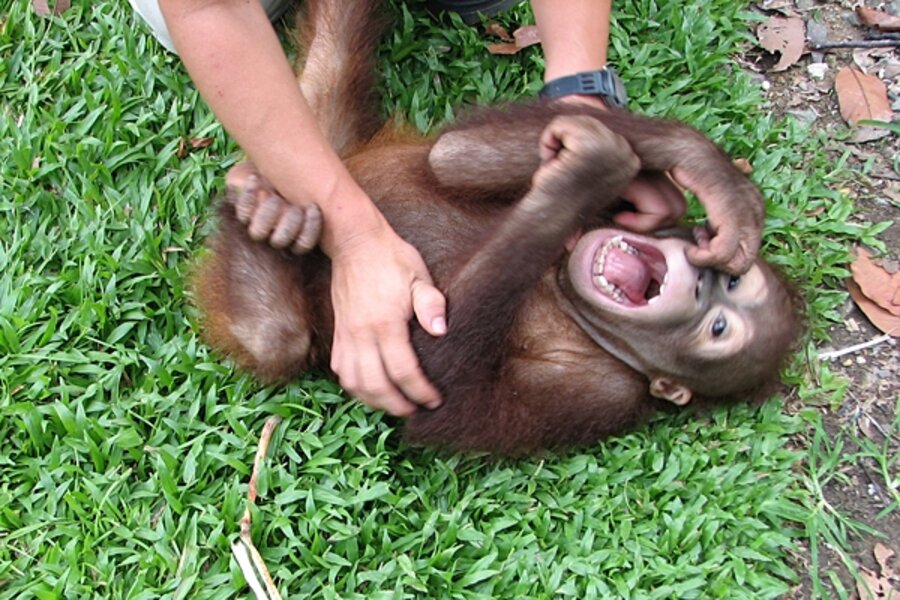In apes' giggles, scientists find an important evolutionary clue
Loading...
It's no laughing matter.
A new study published today in the scientific journal Current Biology argues that human emotional expressions have their origins in a shared ancestor, who roamed the earth approximately 10 million years ago. As Malcolm Ritter of the AP writes, the results provide "very strong evidence that ape and human laughter are related through evolution."
So how exactly did a group of scientists test their theory?
Well, they rounded up a group of apes – 22 in all – and then they tickled them. And then they tickled them some more. "The current work examined the acoustics of tickle-induced vocalizations from infant and juvenile orangutans, gorillas, chimpanzees, and bonobos, as well as tickle-induced laughter produced by human infants," reads the summary from the study. "Taken together, the results provide strong evidence that tickling-induced laughter is homologous in great apes and humans."
The experiment was headed by Marina Davila Ross, a scientist at the University of Portsmouth, in England, and involved staff from the Institute of Zoology in Hannover, Germany, and the Department of Psychology at Georgia State University, in the US.
The laughter "seemed like an expression of joy," Davila Ross, a research fellow in the department of psychology at George State University, told the Atlanta Journal Constitution. "It seemed to me that the subjects enjoyed the attention and the positive interaction with their caretakers, and did not show much attempt to leave when the tickling session was over."
Alan Boyle writes on MSNBC's website that in the study, "11 auditory variables were measured for the 25 experimental subjects - variables such as the length of the vocalization, the in-and-out breathing patterns and the vibrations of the vocal cords. All those numbers were fed into a software program that looked for relationships between the data points. Then the computer constructed a phylogenetic tree (that is, the 'family tree') that fit the data best."





